- Your cart is empty
- Continue Shopping
What is an Ergonomic Chair?
According to Ergonomic Trends, “an Ergonomic Chair is one that not only follows best practices in terms of proven ergonomic
What actually happens when you sit? There is no doubt that we spend an enormous portion of our day sitting down. According to statistics released by BigThink.Com, people spend over 7700 days, or 21 years of their lives sitting. Typically, professional office workers spend about 70 percent of their time sitting at their workstation, while deskbound workers such as telemarketers, spend nearly all their working hours sitting down. What happens to your body when you sit all day, or too long?
When you sit there is an interaction between various body elements, broadly classified as skeletal and soft-tissue elements. The spinal column, consisting of the vertebrae and intervertebral discs, together with the pelvis, are the primary skeletal structures that have a significant impact on your comfort and wellbeing when you sit.
Prolonged sitting and back pain
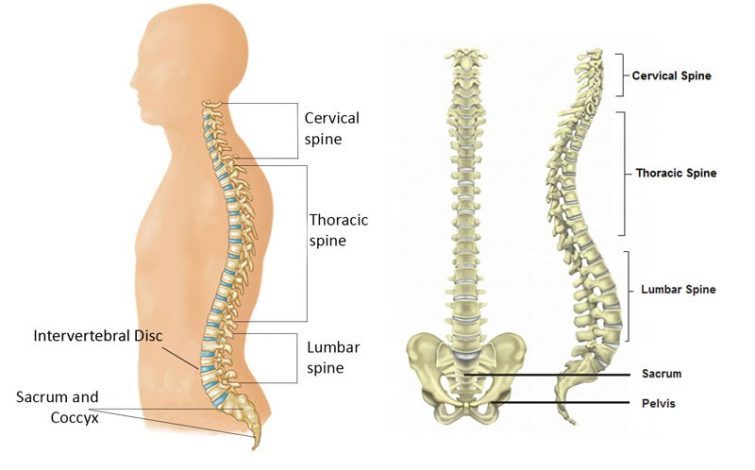
The 24 vertebral bones called the spine, or spinal column, are the most important structure in the body when it comes to sitting.
At the top of the spinal column, the cervical region (neck) consists of seven vertebrae that produce a forward spinal curvature known as a lordosis.
The thoracic region (mid back) consists of 12 vertebrae that provide an opposite curvature or kyphosis.
Finally, at the bottom of the spinal column, the lumbar region (low back) consists of 5 vertebrae that create another forward spinal curvature or lordosis.
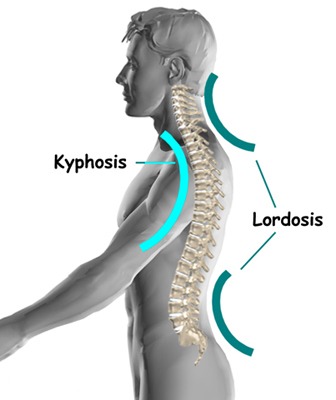
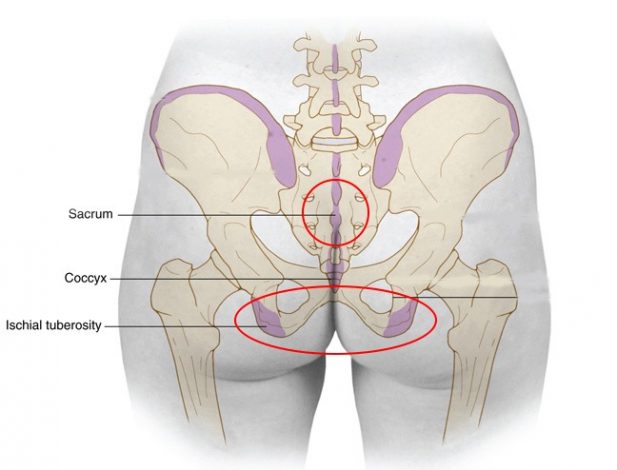
The base of the spine is called the sacrum which is a triangular fusion of five vertebrae wedged between two pelvic bones that create the pelvic girdle. The two primary bones of the pelvis that we sit on are called ischial tuberosity or sitting bones
The intervertebral discs are tough lozenges of fibrous cartilage with a thick fluid in the centre. They separate the individual vertebrae (vertebral body) from each other and give the spine flexibility and cushioning.
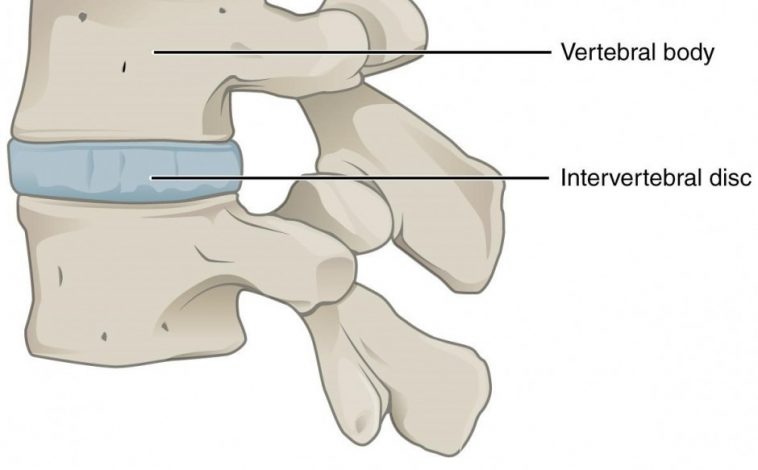
When we sit with our thighs at a 900 angle to our back, two major skeletal movements take place. In the first instance, the long thigh bones (femurs) rotate in their pelvic sockets through approximately 600. Thereafter, the ligaments attaching the femurs to the pelvis, pull on the rear of the pelvis. This rotates it backwards through the remaining 300. Due to the rotation of the pelvis, the natural lordosis (inward) curve in the lower back changes to a kyphosis (outward) curve.
Most of the change to a kyphosis curve occurs in the first three or four vertebrae above the pelvis. During this process, the front edges of the vertebrae squeeze closer together while the back edges spread further apart. This increases the pressure on the front portions of the intervertebral discs.
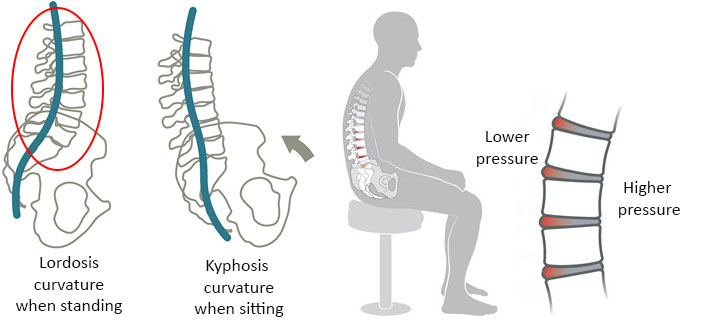
Sitting with a flattened lumbar spine or kyphosis, can put two to three times more pressure on the intervertebral discs than sitting in a way that maintains the lumbar spine’s natural lordosis curve. In a worst-case scenario, the increase in disc pressure can lead to a herniated or slipped disc.
Because unsupported sitting is unstable, you continually move and make small rocking movements over the ischial tuberosities or sitting bones. At the same time, the skin and muscles under the sitting bones are compressed and the large buttock muscles (gluteus maximi or glutes), slide to one side leaving the ischial tuberosities resting on a cushion of fat and skin. This restricts the blood flow to and from the intervertebral discs.
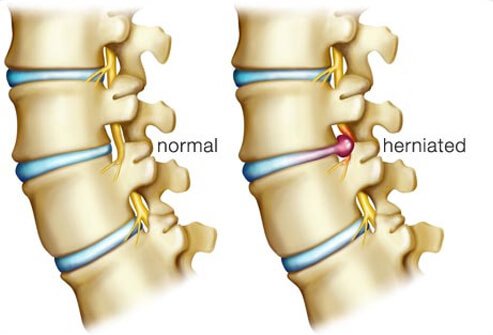
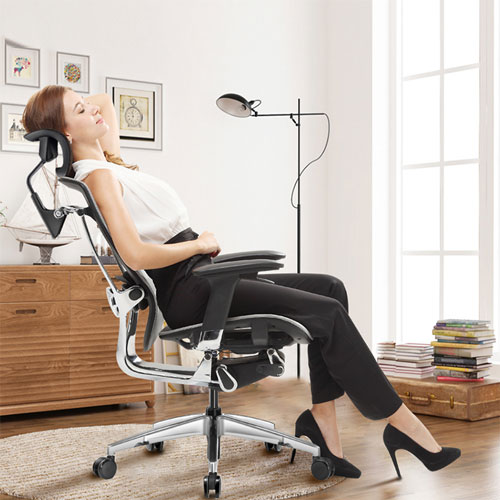
As we spend a greater percentage of time working on computers, we spend up to 75% of the time in a more upright or forward-leaning seated position as opposed to a reclining position.
Research has shown that a chair that allows for a reclined posture that increases the angle between the seat and backrest, reduces the rotation of the pelvis. This results in reduced disc pressure and increases muscle activity in the lower back.
An example is an ergonomic chair fitted with a synchronous swivel and tilt mechanism that promotes Dynamic Sitting.
So what happens to your body when you sit all day? Quite simply it gets tired, specifically the muscles in the lower back. If there is no lumbar support to maintain the lordosis curve of the lower back, you slump down or slouch, in the chair. This results in an even greater outward-curving (kyphosis) shape in the lower back. The compression and pressure in the intervertebral discs increases.
As you slump down, your head comes forward. This forces the muscles at the back of the neck to keep your head in its original position. Muscle tension at the back of the neck may increase by up to 50% when you change from an upright to a slumped sitting posture.
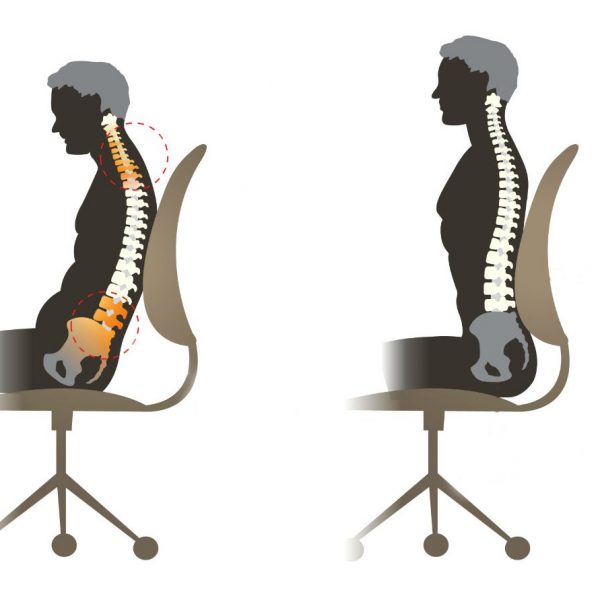
When a person slouches, their spine goes out of alignment and muscles must work overtime to make up for the lack of skeletal support. In other words, they have to hold up the extra weight that is not supported by the skeleton. In addition to wear and tear on the muscles, this also stresses other soft tissues, specifically the ligaments and tendons. Harvard research confirms that slouching can cause backaches, headaches, fatigue, constipation, heartburn and poor concentration. A healthy posture is when the spine is properly aligned. This promotes greater overall comfort, including improved concentration and endurance through long hours of seated work.
Slouching can cause backaches, headaches, fatigue and poor concentration.
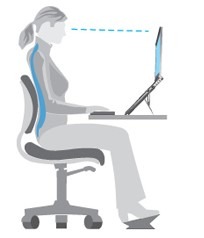
Good posture balances your body weight on your skeletal structure just as nature intended. This reduces the workload on your muscles and enhances blood circulation throughout the body. As a result, the pressure on the diaphragm is reduced, thereby improving your breathing and preventing fatigue.
A chair that provides proper lumbar support ensures that the lordosis curve in the lumbar region is maintained. This allows the lower back muscles to relax and prevents slumping during sitting.
If the backrest can be reclined to allow for Dynamic Sitting, the compression and pressure in the discs is reduced. Not only does this improve blood flow to the discs, but it also reduces the stress in the lower back muscles. We offer a broad variety of Ergonomic chairs and orthopedic chairs that promote Dynamic Sitting. What is the difference between an ergonomic and orthopedic chair?
Sitting can place many stresses on the body. The most obvious ergonomic risk factors are the compressive force in the discs and the constant static loading of the muscles in the lower back.
For many years, medical and ergonomics experts have understood the importance of seating that controls the rotation of the pelvis.
Research has found that the addition of a wedge-shaped pelvic cushion reduces the rotation of the pelvis and prevents the flattening of the lumbar spine, or kyphosis. The angle of the wedge is important. If it is too high (above 200), the pelvis will be forced to tilt too far forward, creating extreme lumbar lordosis that causes the thoracic and cervical spine to compensate with extreme curves to maintain balance. The result of such a forced posture is increased muscle activity and disc pressure leading to even greater fatigue and discomfort.
Lumbar support alone cannot naturally restore spinal curvatures in a body that is seated in an upright position, especially as people are more likely to sit in upright or forward-leaning postures than to recline while working at the computer.
An effective work chair must provide lumbar support. However, recent research indicates that it is as important to provide pelvic support that reduces the rotation of the pelvis and preserve the natural lordosis curvature of the lower back. Is a kneeling chair a good option?
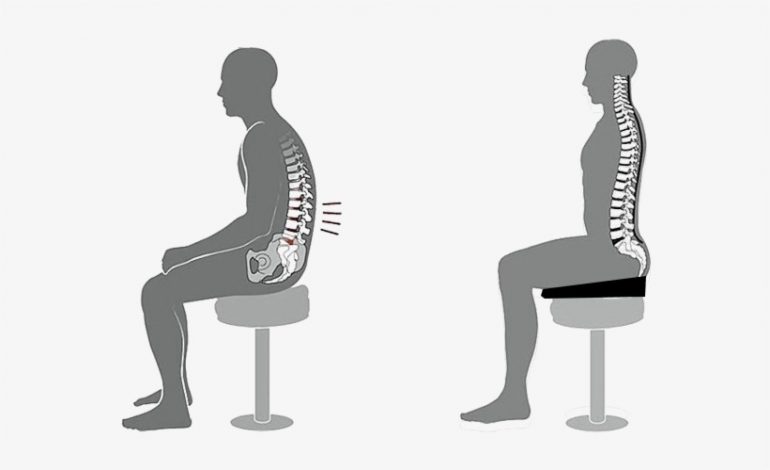
The more we sit, the higher our risk of herniated discs and other back troubles.
To circumvent excessive continuous sitting, research has shown that alternate periods of standing and sitting whilst working, can dramatically decrease the incidence of back, neck, and shoulder pain.
Changing from a seated to standing posture stimulates the muscles and blood-flow which in turn prevents fatigue and associated muscular pain. The use of sit/stand desking allows you to quickly and easily switch from a seated to a standing posture, and is ideal for anyone that spends many hours behind a desk. 7 Benefits of using a Sit-Stand Desk.
What happens to our bodies when we sit all day can be detrimental to our long-term health. Following best ergonomic practices in the workplace can be highly beneficial. The first step, is to invest in a good ergonomic or orthopedic office chair.
According to Ergonomic Trends, “an Ergonomic Chair is one that not only follows best practices in terms of proven ergonomic
What is an orthopedic office chair and how does if differ from an ergonomic chair? Which is best for chronic lower back pain?
Office chairs have an array of levers and knobs to adjust the backrest, seat and armrests. How do you achieve a healthy sitting posture?